
mag3-kyl-header
Long haul truck drivers have the best job in the world. They enjoy their freedom, see the world and meet new people while doing what they love most: driving! Nevertheless, companies have a challenge to retain a dedicated fleet of qualified drivers*. And that is why many are turning to truck manufacturers for a solution. Meet Bart Van Lotringen, DAF’s Director of Design.

mag3 kyl portrait
Bart Van Lotringen, DAF’s Director of Design
For decades “cabin design has remained largely-similar for the simple reason that legislation restricts the overall dimensions of a truck”, according to Bart Van Lotringen, DAF’s Director of Design. Truck drivers need to drive, work, relax and sleep in a space smaller than a student’s studio apartment ౼ often for days on end.
Recent regulations, however, have opened the door to breakthrough design. “Regulations have significantly altered, and created a paradigm shift,” he says. “The loading length is still restricted to 13.5 m, but the overall length of the truck is now left open as long as the turning circle meets the usual standard. Designers can choose how long to make the cabin, with the condition that any extension must improve aerodynamics and fuel efficiency, safety and driver comfort”. With this new design freedom, Van Lotringen and his team literally went back to the drawing board, designing a new cabin from scratch: DAF’s New Generation trucks.
Safety first
“We set out to eliminate the strains of driving,” says Van Lotringen.
"Our philosophy is: Hands on the wheel and eyes on the road. That’s why we started with a best-in-class intuitive Human Machine Interface: all important driving control buttons are directly on the steering wheel – or logically positioned on the stalks. No touch screens. Physical buttons. Just like the drivers want to have it, as they stated during the extensive sounding boards we organised. In addition, we added unprecedented visibility with no less than 33% larger windscreens ; unseen in the industry! We wanted to maximise direct vision ౼ the more you can see and the more eye contact you can have with others on the road, the better you can interact and avoid accidents.”
For a perfect driving environment, Van Lotringen focused on improving ergonomics, specifically the adjustability of seats and steering wheel to encourage optimal driving posture with perfect view of the instruments.
The driver needs to be in control and feel in command, which gives an alert state of mind and less strain by providing information only when you need it.
“While we created a complete new driving experience, it was equally important to improve the resting and sleeping environment,” recognises Van Lotringen. “All functions need to work together in a very efficient way so the driver doesn’t have to constantly reorganise the interior to go from one function to another.”
The functions need to be in perfect symbiosis
Driving position, spaciousness and comfort are among the highest valued comfort properties you can offer.
Bart Van Lotringen, DAF's Director of Design
The comforts of home
Other significant interior changes have been made in the driving, resting and sleeping areas of the cabin. “Driving position, spaciousness and comfort are among the highest valued comfort properties you can offer,” explains Van Lotringen. The driver and passenger chairs in the New Generation cabin can optionally swivel to face inwards, and combined with ample horizontal surfaces they offer great working and relaxing spaces. Pull out storage bins were added to provide a place for personal items and the passenger seat folds down into a bedside table. “It’s a new era of driver comfort.”
A nod to sustainable mobility
Many of the comfort and safety elements also contribute to fuel efficiency and aerodynamics. First, replacing side view mirrors with cameras reduces drag and lowers fuel consumption. The tapered cabin shape also delivers exceptional fuel and aerodynamic efficiency. While there is an unmistakable shift towards design characteristics that favor sustainability, Van Lotringen presumes the industry-wide adoption of alternative energy solutions will take some time. “First decade will be a transition period ౼ which we’re currently in ౼ mixing electric or hydrogen vehicles with combustion engines. Once we have solely electric, hydrogen or another driveline, certain cabin design architecture might be revised.”
*Interview by Bart Van Lotringen on 7 september 2021
Listen to our Trick'n truck podcast#3

mag3 kyl title

1934
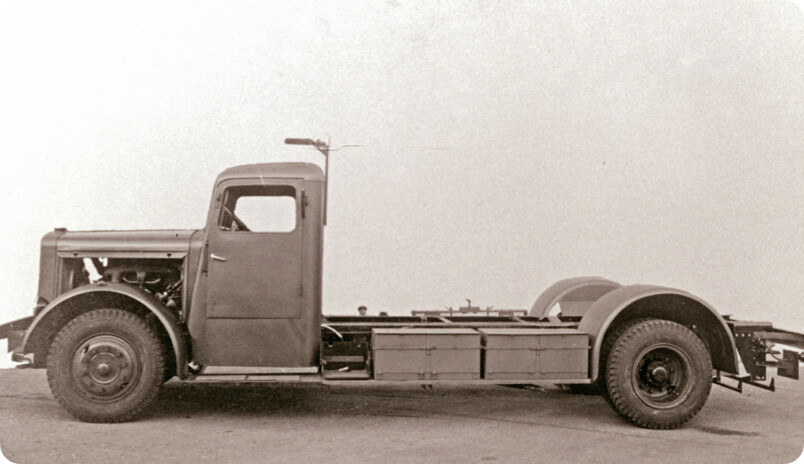
mag3 kyl 1934
Fondation de l'automobile Marius Berliet - Lyon - France
Renault introduced its first cabin forward design. With the cab sitting above the front axle, this innovation significantly increased the truck’s loading area.

1958

mag3 kyl 1958
Fondation de l'automobile Marius Berliet - Lyon - France
Berliet pushed the industry to focus on driver comfort with the launch of its “Relaxe cabin”. The spacious, functional cab offered a level of comfort never before seen in heavy duty vehicles. The design integrated a large panoramic windshield and easy access, wide-opening doors. The engine is housed in a sealed tunnel with hot exhaust air evacuated to the rear.

1964
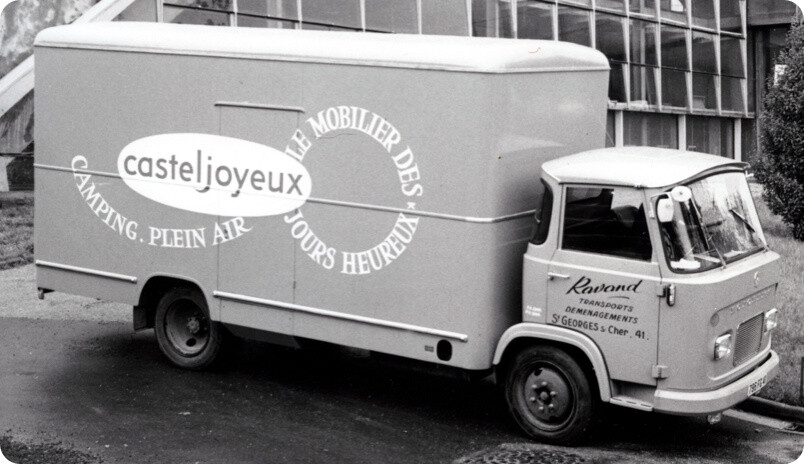
mag3 kyl 1964
Fondation de l'automobile Marius Berliet - Lyon - France
Hotchkiss, a French car and arms manufacturer, produced civilian vehicles from 1904 to 1954 and military vehicles until 1969. The company designed the first tilt cab truck, providing easier access to the engine. The Hotchkiss PL60/DH60 trucks (6 tonnes GVW) were the first French trucks to feature this cab.

1970

mag3 kyl 1970
Fondation de l'automobile Marius Berliet - Lyon - France
Berliet continued to design for more comfort and visibility. Its KB2400 cabin - with the Berliet TR 300 - was considered the industry standard for years.

1981
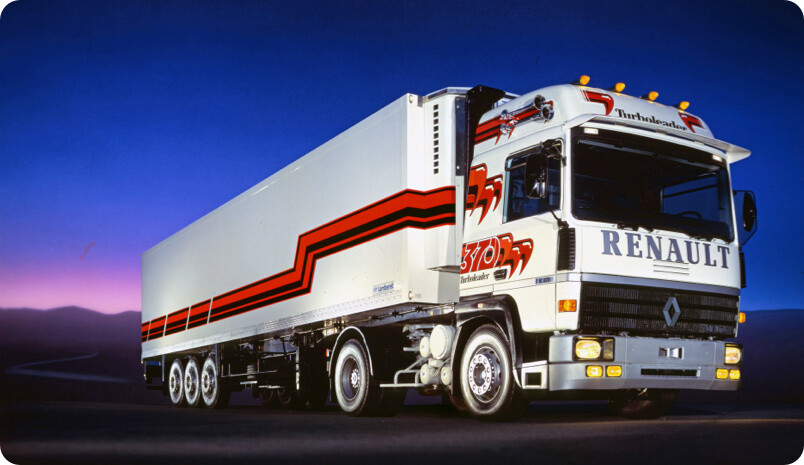
mag3 kyl 1981
Fondation de l'automobile Marius Berliet - Lyon - France
RVI (Renault Véhicule industriel) launched the Turboleader. While the 2480 cab is very similar to the KB2400, this "Phoenix" stood out with marked improvements in layout and equipment. The Turboleader's cabin was one of the most spacious on the market, with a low-profile engine bonnet and a very high roof. With 2.05 metres between the floor and the sun roof, drivers could stand upright inside the cab.

1990

mag3 kyl 1990
Fondation de l'automobile Marius Berliet - Lyon - France
With its AE cabin, Renault Trucks revolutionized cabin design. The design provided a flat floor and once again bumped up the level of comfort in mass production trucks.

2021
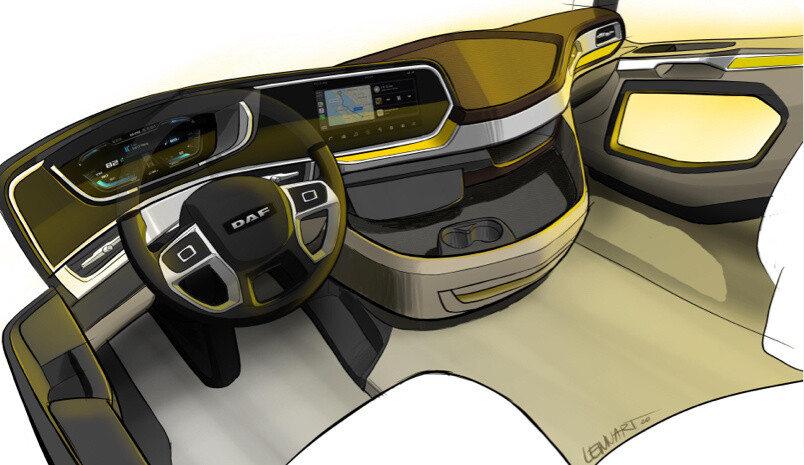
mag3 kyl 2021
Fondation de l'automobile Marius Berliet - Lyon - France
DAF Trucks is the first brand that adopts new Masses and Dimensions legislation. A paradigm shift in truck design is created with the 12,5m3 large New Generation cabs that set a new benchmark in spaciousness.
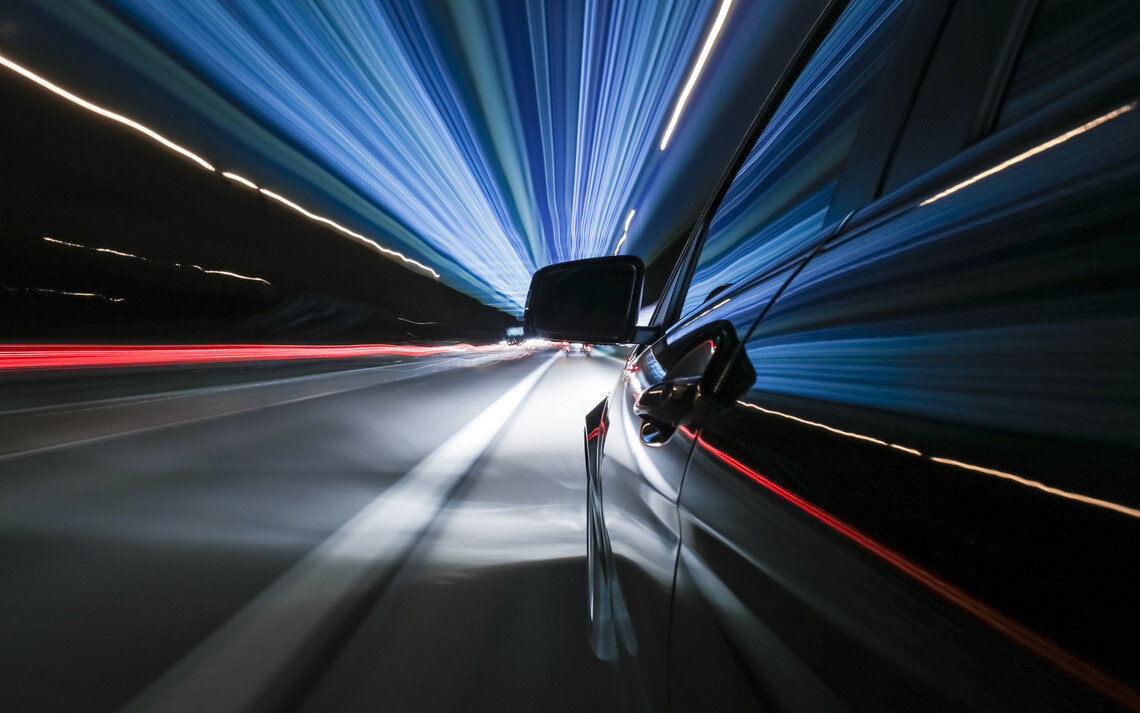
gettyimages 930571046
car going fast on a road by night






